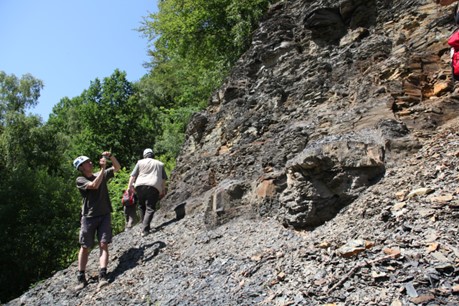Universitetsavisen
Nørregade 10
1165 København K
Tlf: 21 17 95 65 (man-fre kl. 9-15)
E-mail: uni-avis@adm.ku.dk
PhD thesis defense
PhD thesis defense — Zhengfu Zhao 22 AUG
Date & Time:
Place:
https://ucph-ku.zoom.us/s/61602608043
Hosted by:
Geology Section, Department of Geosciences and Natural Resource Management, Øster Voldgade 10, 1350 København K
Cost:
Free
Zhengfu Zhao defends his thesis,
Integrated stratigraphic analysis of the late Cambrian Alum Shale Formation, Scandinavia: Implications for the geological time scale and for oceanic redox changes
Supervisors:
Associate Professor Arne Thorshøj Nielsen, IGN
Associate Professor Tais W. Dahl, Globe Institute, UCPH
Senior Researcher Niels H. Schovsbo, GEUS
Professor Xiongqi Pang, China University of Petroleum – Beijing
Assessment Committee:
Professor David De Vleeschouwer, University of Münster – Germany
Professor Linda A. Hinnov, George Mason University – US
Professor MSO Christian J. Bjerrum (chair), IGN
Summary:
The late Cambrian witnessed significant biotic turnovers, along with conspicuous perturbations in the global carbon cycle, atmospheric oxygen level and marine redox landscape. The Alum Shale in Baltoscandia provides a unique opportunity to study these changes. Although investigated for decades, at least three aspects regarding this succession remain unclear. Firstly, the upper Cambrian stratigraphic correlation between the Baltica and other palaeocontinents is not tightly constrained. Secondly, the late Cambrian is the most poorly dated period of the entire Phanerozoic, which hampers a detailed understanding of the timing and progression of the major environmental and biological changes. Thirdly, key aspects of the oceanic redox changes (e.g., timing, duration, extent, and trigging mechanisms) and their influences on coeval biotic reorganizations remain unclear. To address these issues, the middle Cambrian to Lower Ordovician part of the Alum Shale Formation in four Baltoscandian cores was studied using cyclostratigraphic and C-U-Mo isotope chemostratigraphic methods.
Carbon isotope stratigraphic analysis revealed seven biostratigraphically well-constrained δ13Corg excursions/spikes through the studied Alum Shale succession, of which three appear valuable as auxiliary markers for identifying global stage boundaries. Cyclostratigraphic analysis on high-resolution (1 mm) aluminium concentration indicates robust astronomically forced climate cycles in the Alum Shale. The established 405-ky floating time scale was anchored by radioisotopic date published for the Cambrian–Ordovician boundary, leading to an absolute time scale ranging from ~499.9 to ~483.9 Ma. This enables a first assessment, in numerical time, of the evolution of major biotic and abiotic changes during the late Cambrian (e.g., the end-Miaolingian extinctions and the Steptoean Positive Carbon Isotope Excursion [SPICE]). Within the established astrochronologic framework, the high-resolution δ238U–δ98Mo data revealed dynamic oceanic redox conditions across the SPICE event, including global euxinia expansion (SPICE-OAE, 497.9–496.6 Ma), euxinia contraction accompanied by carbonate inputs (496.6–495.8 Ma) and general global oxygenation (495.8–494.4 Ma). The SPICE-OAE likely triggered the end-Miaolingian extinctions. The time gap between the onset of this biotic crisis and the appearance of new fauna is estimated to be ~600 kyr.
A digital version of the PhD thesis can be obtained from the PhD secretary Mikala Heckscher at mikala@ign.ku.dk
